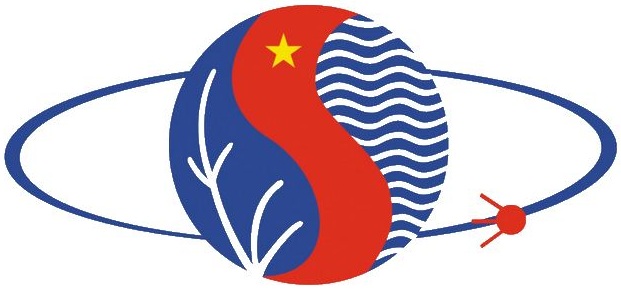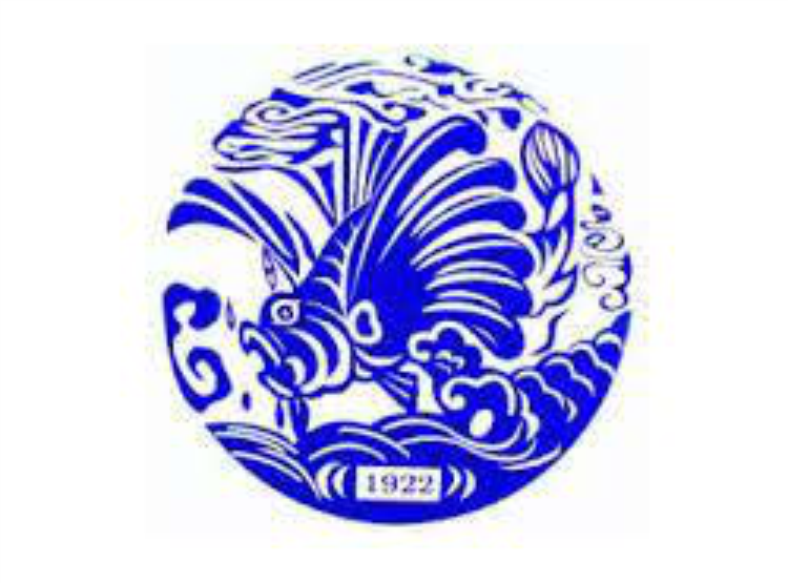Sulfated polysaccharides of Green Algae: Chemical Composition and Antioxidant Activity in vitro of Fractionated Ulvans from Ulva lactuca and Ulva papenfussii
Author affiliations
DOI:
https://doi.org/10.15625/1859-3097/22735Keywords:
Fractionated ulvans, chemical ccomposition, antioxidant activity, Ulva papenfussii, Ulva lactucaAbstract
The study evaluated the chemical composition, molecular weight, and antioxidant activity of ulvan extracted from Ulva papenfussii and Ulva lactuca. The results revealed distinct differences in the monosaccharide composition, sulfate content, and uronic acid levels between ulvans from both species, with ulvan from U. papenfussii exhibiting higher levels of iduronic acid and sulfate (16.39 ± 0.45 %w/w and 28.46 + 3.63 %w/w). Ulvan was fractionated using anion exchange chromatography (DEAE) based on charge differences, yielding three main fractions from each species. This study is the first to analyze different ulvan fractions from Vietnamese green algae using the anion exchange chromatography method. The antioxidant activity of the ulvan fractions was determined by their ability to DPPH radical scavenging activity, reducing power activity, and antioxidant activity, with UL2 (29.5 ± 0.94 Sc%) and UP2 (25.9 ± 1.77 Sc%) demonstrating the most prominent results. These active fractions were characterized by higher sulfate and uronic acid content, suggesting a potential structure–activity relationship. These findings highlight the potential of ulvan in the food and pharmaceutical industries.
Downloads
References
[1] J. T. Kidgell, M. Magnusson, R. de Nys, and C. R. Glasson, “Ulvan: A systematic review of extraction, composition and function,” Algal Research, vol. 39, 101422, 2019. DOI: 10.1016/j.algal.2019.101422.
[2] M. A. Praveen, K. K. Parvathy, P. Balasubramanian, and R. Jayabalan, “An overview of extraction and purification techniques of seaweed dietary fibers for immunomodulation on gut microbiota,” Trends in Food Science & Technology, vol. 92, pp. 46–64, 2019. DOI: 10.1016/j.tifs.2019.08.011.
[3] L. Shi, “Bioactivities, isolation and purification methods of polysaccharides from natural products: A review,” International Journal of Biological Macromolecules, vol. 92, pp. 37–48, 2016. DOI: 10.1016/j.ijbiomac.2016.06.100.
[4] B. Ray and M. Lahaye, “Cell-wall polysaccharides from the marine green alga Ulva ‘rigida’ (Ulvales, Chlorophyta). Extraction and chemical composition,” Carbohydrate Research, vol. 274, pp. 251–261, 1995. DOI: 10.1016/0008-6215(95)00138-J.
[5] A. K. Siddhanta, A. M. Goswami, B. K. Ramavat, K. H. Mody, and O. P. Mairh, “Water soluble polysaccharides of marine algal species of Ulva (Ulvales, Chlorophyta) of Indian waters,” Indian Journal of Marine Sciences, vol. 30, no. 3, pp. 166–172, 2001.
[6] A. Robic, C. Rondeau-Mouro, J. F. Sassi, Y. Lerat, and M. Lahaye, “Structure and interactions of ulvan in the cell wall of the marine green algae Ulva rotundata (Ulvales, Chlorophyceae),” Carbohydrate Polymers, vol. 77, no. 2, pp. 206–216, 2009. DOI: 10.1016/j.carbpol.2008.12.023.
[7] L. S. Costa, G. P. Fidelis, S. L. Cordeiro, R. M. Oliveira, D. A. Sabry, R. B. G. Câmara, L. T. D. B. Nobre, M. S. S. M. Costa, J. A. Lima, E. H. C. Farias, E. L. Leite, and H. A. O. Rocha, “Biological activities of sulfated polysaccharides from tropical seaweeds,” Biomedicine & Pharmacotherapy, vol. 64, no. 1, pp. 21–28, 2010. DOI: 10.1016/j.biopha.2009.03.005.
[8] B. Li, S. Liu, R. Xing, K. Li, R. Li, Y. Qin, X. Wang, Z. Wei, and P. Li, “Degradation of sulfated polysaccharides from Enteromorpha prolifera and their antioxidant activities,” Carbohydrate Polymers, vol. 92, no. 2, pp. 1991–1996, 2013. DOI: 10.1016/j.carbpol.2012.11.088.
[9] Z. Zhang, F. Wang, X. Wang, X. Liu, Y. Hou, and Q. Zhang, “Extraction of the polysaccharides from five algae and their potential antioxidant activity in vitro,” Carbohydrate Polymers, vol. 82, no. 1, pp. 118–121, 2010. DOI: 10.1016/j.carbpol.2010.04.031.
[10] I. Wijesekara, R. Pangestuti, and S. K. Kim, “Biological activities and potential health benefits of sulfated polysaccharides derived from marine algae,” Carbohydrate Polymers, vol. 84, no. 1, pp. 14–21, 2011. DOI: 10.1016/j.carbpol.2010.10.062.
[11] H. Qi, T. Zhao, Q. Zhang, Z. Li, Z. Zhao, and R. Xing, “Antioxidant activity of different molecular weight sulfated polysaccharides from Ulva pertusa Kjellm (Chlorophyta),” Journal of Applied Phycology, vol. 17, no. 6, pp. 527–534, 2005. DOI: 10.1007/s10811-005-9003-9.
[12] H. Qi, Q. Zhang, T. Zhao, R. Chen, H. Zhang, X. Niu, and Z. Li, “Antioxidant activity of different sulfate content derivatives of polysaccharide extracted from Ulva pertusa (Chlorophyta) in vitro,” International Journal of Biological Macromolecules, vol. 37, no. 4, pp. 195–199, 2005. DOI: 10.1016/j.ijbiomac.2005.10.008.
[13] Z. Zhang, X. Wang, S. Yu, L. Yin, M. Zhao, and Z. Han, “Synthesized oversulfated and acetylated derivatives of polysaccharide extracted from Enteromorpha linza and their potential antioxidant activity,” International Journal of Biological Macromolecules, vol. 49, no. 5, pp. 1012–1015, 2011. DOI: 10.1016/j.ijbiomac.2011.08.023.
[14] Z. Zhang, X. Wang, M. Zhao, S. Yu, and H. Qi, “The immunological and antioxidant activities of polysaccharides extracted from Enteromorpha linza,” International Journal of Biological Macromolecules, vol. 57, pp. 45–49, 2013. DOI: 10.1016/j.ijbiomac.2013.03.006.
[15] H. Yaich, A. B. Amira, F. Abbes, M. Bouaziz, S. Besbes, A. Richel, C. Blecker, H. Attia, and H. Garna, “Effect of extraction procedures on structural, thermal and antioxidant properties of ulvan from Ulva lactuca collected in Monastir coast,” International Journal of Biological Macromolecules, vol. 105, pp. 1430–1439, 2017. DOI: 10.1016/j.ijbiomac.2017.07.141.
[16] Q. T. M. Thu, T. H. Bang, N. T. Nu, Đ. V. Luong, B. M. Ly, T. T. T. Van, and T. T. T. Thuy, “Structural determination of ulvan from green seaweed Ulva reticulata collected at central coast of Vietnam,” Chemistry Letters, vol. 44, no. 6, pp. 788–790, 2015. DOI: 10.1246/cl.150086.
[17] Q. T. M. Thu, H. T. Tam, L. T. H. Nhung, D. V. Luong, N. V. Quang, H. D. Cuong, and T. T. T. Thuy, “Structure and bioactivity of sulfated polysaccharide from green seaweed Enteromorpha intestinalis,” Journal of Science and Technology, vol. 58, no. 1, pp. 109–112, 2022. [in Vietnamese].
[18] V. Q. Ngo, N. A. Nguyen, T. M. T. Quach, T. T. V. Tran, X. C. Dang, Q. T. Nguyen, and T. T. T. Thanh, “Optimization of ultrasound-assisted extraction of ulvan from green seaweed Ulva lactuca,” VNU Journal of Science: Natural Sciences and Technology, vol. 38, no. 3, pp. 70–76, 2022. DOI: 10.25073/2588-1140/vnunst.5371.
[19] T. T. T. Thanh, T. M. T. Quach, T. N. Nguyen, D. V. Luong, M. L. Bui, and T. T. T. Van Tran, “Structure and cytotoxic activity of ulvan extracted from green seaweed Ulva lactuca,” International Journal of Biological Macromolecules, vol. 93, pp. 695–702, 2016. DOI: 10.1016/j.ijbiomac.2016.09.040.
[20] V. H. N. Tran, M. D. Mikkelsen, H. B. Truong, H. N. M. Vo, T. D. Pham, H. T. T. Cao, T. T. Nguyen, A. S. Meyer, T. T. T. Thanh, and T. T. T. Van, “Structural characterization and cytotoxic activity evaluation of ulvan polysaccharides extracted from the green algae Ulva papenfussii,” Marine Drugs, vol. 21, no. 11, p. 556, 2023. DOI: 10.3390/md21110556.
[21] G. S. Anisha, T. Augustianath, S. Padmakumari, R. R. Singhania, A. Pandey, and A. K. Patel, “Ulvan from green macroalgae: Bioactive properties advancing tissue engineering, drug delivery systems, food industry, agriculture and water treatment,” Bioresource Technology Reports, vol. 22, p. 101457, 2023. DOI: 10.1016/j.biteb.2023.101457.
[22] M. I. Bilan, A. A. Grachev, A. S. Shashkov, M. Kelly, C. J. Sanderson, N. E. Nifantiev, and A. I. Usov, “Further studies on the composition and structure of a fucoidan preparation from the brown alga Saccharina latissima,” Carbohydrate Research, vol. 345, no. 14, pp. 2038–2047, 2010. DOI: 10.1016/j.carres.2010.07.009.
[23] M. I. Bilan, A. A. Grachev, N. E. Ustuzhanina, A. S. Shashkov, N. E. Nifantiev, and A. I. Usov, “Structure of a fucoidan from the brown seaweed Fucus evanescens C. Ag.,” Carbohydrate Research, vol. 337, no. 8, pp. 719–730, 2002. DOI: 10.1016/S0008-6215(02)00053-8.
[24] T. T. Nguyen, M. D. Mikkelsen, V. H. N. Tran, V. T. D. Trang, N. Rhein-Knudsen, J. Holck, A. B. Rasin, H. T. T. Cao, T. T. T. Van, and A. S. Meyer, “Enzyme-assisted fucoidan extraction from brown macroalgae Fucus distichus subsp. evanescens and Saccharina latissima,” Marine Drugs, vol. 18, no. 6, 296, 2020. DOI: 10.3390/md18060296.
[25] M. DuBois, K. A. Gilles, J. K. Hamilton, P. A. Rebers, and F. Smith, “Colorimetric method for determination of sugars and related substances,” Analytical Chemistry, vol. 28, no. 3, pp. 350–356, 1956. DOI: 10.1021/ac60111a017.
[26] S. G. Jackson and E. L. McCandless, “Simple, rapid, turbidometric determination of inorganic sulfate and/or protein,” Analytical Biochemistry, vol. 90, no. 2, pp. 802–808, 1978. DOI: 10.1016/0003-2697(78)90171-9.
[27] P. Prieto, M. Pineda, and M. Aguilar, “Spectrophotometric quantitation of antioxidant capacity through the formation of a phosphomolybdenum complex: specific application to the determination of vitamin E,” Analytical Biochemistry, vol. 269, no. 2, pp. 337–341, 1999, DOI: 10.1006/abio.1999.4019.
[28] M. S. Blois, “Antioxidant determinations by the use of a stable free radical,” Nature, vol. 181, no. 4617, pp. 1199–1200, 1958. DOI: 10.1038/1811199a0.
[29] Q. Y. Zhu, R. M. Hackman, J. L. Ensunsa, R. R. Holt, and C. L. Keen, “Antioxidative activities of oolong tea,” Journal of Agricultural and Food Chemistry, vol. 50, no. 23, pp. 6929–6934, 2002. DOI: 10.1021/jf0206163.
[30] B. Li, H. Xu, X. Wang, Y. Wan, N. Jiang, H. Qi, and X. Liu, “Antioxidant and antihyperlipidemic activities of high sulfate content purified polysaccharide from Ulva pertusa,” International Journal of Biological Macromolecules, vol. 146, pp. 756–762, 2020. DOI: 10.1016/j.ijbiomac.2019.11.061.
[31] C. R. Glasson, C. A. Luiten, S. M. Carnachan, A. M. Daines, J. T. Kidgell, S. F. Hinkley, C. Praeger, M. A. Martinez, L. Sarison, M. Magnusson, R. de Ný, and I. M. Sims, “Structural characterization of ulvans extracted from blade (Ulva ohnoi) and filamentous (Ulva tepida and Ulva prolifera) species of cultivated Ulva,” International Journal of Biological Macromolecules, vol. 194, pp. 571–579, 2022. DOI: 10.1016/j.ijbiomac.2021.11.100.
[32] H. Tian, X. Yin, Q. Zeng, L. Zhu, and J. Chen, “Isolation, structure, and surfactant properties of polysaccharides from Ulva lactuca L. from South China Sea,” International Journal of Biological Macromolecules, vol. 79, pp. 577–582, 2015. DOI: 10.1016/j.ijbiomac.2015.05.031.
[33] P. Shao, J. Shao, L. Han, R. Lv, and P. Sun, “Separation, preliminary characterization, and moisture-preserving activity of polysaccharides from Ulva fasciata,” International Journal of Biological Macromolecules, vol. 72, pp. 924–930, 2015. DOI: 10.1016/j.ijbiomac.2014.09.048.
[34] C. R. Glasson, I. M. Sims, S. M. Carnachan, R. de Nys, and M. Magnusson, “A cascading biorefinery process targeting sulfated polysaccharides (ulvan) from Ulva ohnoi,” Algal Research, vol. 27, pp. 383–391, 2017. DOI: 10.1016/j.algal.2017.07.001.
[35] K. Hardouin, G. Bedoux, A. S. Burlot, C. Donnay-Moreno, J. P. Bergé, P. Nyvall-Collén, and N. Bourgougnon, “Enzyme-assisted extraction (EAE) for the production of antiviral and antioxidant extracts from the green seaweed Ulva armoricana (Ulvales, Ulvophyceae),” Algal Research, vol. 16, pp. 233–239, 2016. DOI: 10.1016/j.algal.2016.03.013.
[36] M. Tabarsa, S. You, E. H. Dabaghian, and U. Surayot, “Water-soluble polysaccharides from Ulva intestinalis: Molecular properties, structural elucidation and immunomodulatory activities,” Journal of Food and Drug Analysis, vol. 26, no. 2, pp. 599–608, 2018. DOI: 10.1016/j.jfda.2017.07.016.
[37] H. Yaich, H. Garna, S. Besbes, J. P. Barthélemy, M. Paquot, C. Blecker, and H. Attia, “Impact of extraction procedures on the chemical, rheological and textural properties of ulvan from Ulva lactuca of Tunisia coast,” Food Hydrocolloids, vol. 40, pp. 53–63, 2014. DOI: 10.1016/j.foodhyd.2014.02.002.
[38] J. T. Kidgell, S. M. Carnachan, M. Magnusson, R. J. Lawton, I. M. Sims, S. F. Hinkley, R. de Nys, and C. R. Glasson, “Are all ulvans equal? A comparative assessment of the chemical and gelling properties of ulvan from blade and filamentous Ulva,” Carbohydrate Polymers, vol. 264, p. 118010, 2021. DOI: 10.1016/j.carbpol.2021.118010.
[39] H. Wang, R. T. Hill, T. Zheng, X. Hu, and B. Wang, “Effects of bacterial communities on biofuel-producing microalgae: stimulation, inhibition and harvesting,” Critical Reviews in Biotechnology, vol. 36, no. 2, pp. 341–352, 2016. DOI: 10.3109/07388551.2014.961402.
[40] S. Chen, H. Chen, Q. Du, and J. Shen, “Targeting myeloperoxidase (MPO) mediated oxidative stress and inflammation for reducing brain ischemia injury: potential application of natural compounds,” Frontiers in Physiology, vol. 11, 433, 2020. DOI: 10.3389/fphys.2020.00433.
[41] Y. Yuan, X. Xu, C. Jing, P. Zou, C. Zhang, and Y. Li, “Microwave assisted hydrothermal extraction of polysaccharides from Ulva prolifera: Functional properties and bioactivities,” Carbohydrate Polymers, vol. 181, pp. 902–910, 2018. DOI: 10.1016/j.carbpol.2017.11.061.
Downloads
Published
How to Cite
Issue
Section
License
Copyright (c) 2025 Vietnam Academy of Science and Technology

This work is licensed under a Creative Commons Attribution-NonCommercial-NoDerivatives 4.0 International License.








